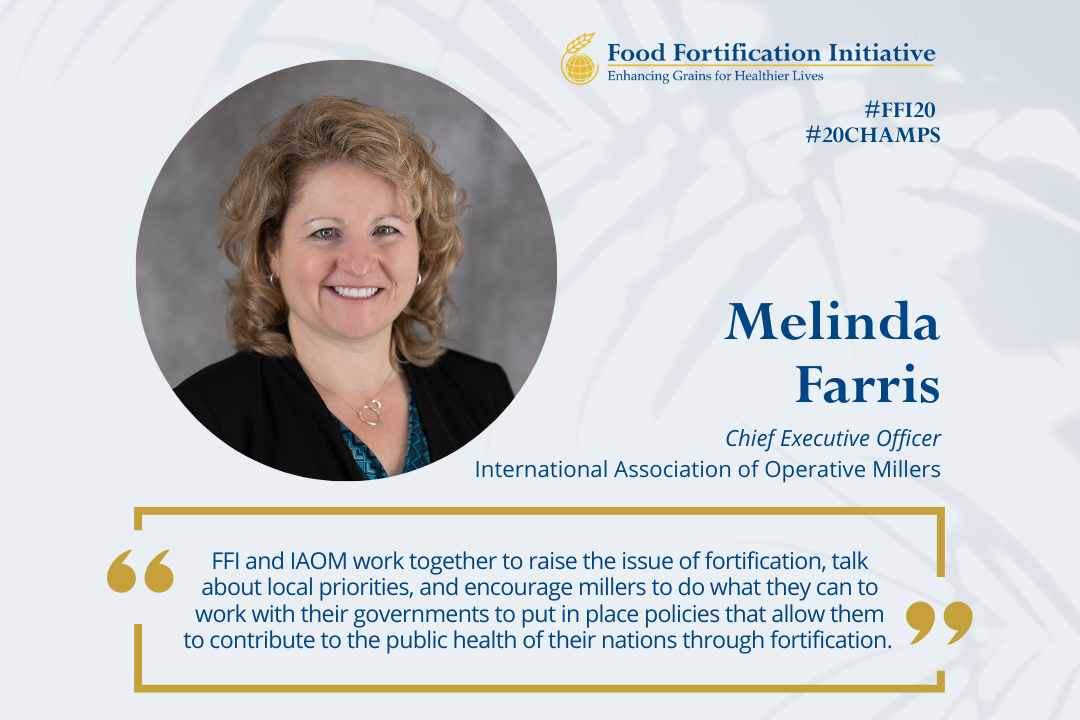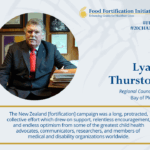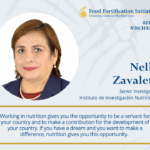CEO of International Association of Operative Millers

FFI: How did you become interested in nutrition?
Farris: My background is not in nutrition, and I only learned about the importance of fortification when I started working at the International Association of Operative Millers (IAOM) in 2004. One of my first meetings was with Vilma Tyler and Bob Baldwin, both of whom were working at FFI at the time. They are the ones who explained to me the integral role flour millers play in improving the public health of populations around the world when they add fortificants to their finished products.
FFI: What inspired you to become involved with food fortification?
Farris: Flour millers in some parts of the world have been fortifying flour for decades. As an organization that provides education and training to milling professionals, it is part of our mission to offer this kind of information to our members around the world. For some in our association, fortification is something they have “always done.” For those without guidance from their governments, it can pose a moral dilemma: How do we do what’s right, if there aren’t mandates in place to guide us and create a level playing field?
FFI: How is your organization prioritizing fortification?
Farris: IAOM coordinates with FFI to identify the appropriate IAOM meetings to add a fortification focus. After a couple of years of having fortification presentations at the IAOM Mideast & Africa conferences, many millers in the region decided to voluntarily fortify. In other regions, FFI and IAOM work together to raise the issue of fortification, talk about local priorities, and encourage millers to do what they can to work with their governments to put in place policies that allow them to contribute to the public health of their nations through fortification.
FFI: What health outcomes do you expect fortification to improve globally?
Farris: Based on what I’ve learned over the years, fortification should help to significantly reduce the number of birth defects and people with iron deficiency, both of which will have a positive impact on the economic growth in a country. Overall, fortification of staple food products like flour, rice, and maize will improve cognitive development, increase physical productivity, and help address gender inequalities.
FFI: In your experience, what are the main components to a successful fortification program?
Farris: It has become abundantly clear that mandated legislation is essential to a successful and sustainable fortification program. Voluntary fortification is welcome, but when it is mandated, it provides a level playing field for milling companies and signals the government’s support of a healthy and productive populace. Support from local grassroots organizations is key.
FFI: What are the greatest challenges you have encountered in planning or implementing fortification programs? And how did you address those challenges?
Farris: Honestly, I’m often dumbfounded by the inaction of governments around the world to make fortification happen in their countries. The economic arguments alone should be enough to convince them to mandate fortification. In addition to the documented economic benefits of fortification, there are indisputable indicators of the importance fortification has on the overall health of the public.
FFI: What can we do as a society to continue strengthening fortification efforts?
Farris: As a society, we need to continue to educate and inform people about this important, cost-effective way to improve public health in countries around the world. It’s important to emphasize how important fortification is to address 9 of the United Nation’s 17 sustainable development goals (SDGs).
This interview is part of the #FFI20 Champions campaign, a celebration of fortification heroes who have helped build a smarter, stronger, and healthier world by strengthening fortification programs over the past 20 years. To read interviews with other champions, visit the #FFI20 Champions campaign homepage.



